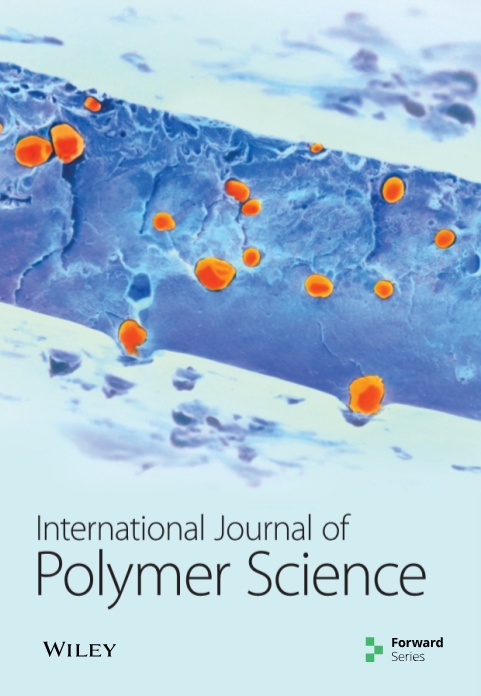Characterization and Performance Evaluation of PIN Diodes and Scope of Flexible Polymer Composites for Wearable Electronics
IF 4.4
4区 化学
Q2 POLYMER SCIENCE
引用次数: 0
Abstract
Different semiconductor materials have been used for the fabrication of PIN diodes such as Si, Ge, GaAs, SiC-3C, SiC-4H, and InAs. These different semiconductor materials show different characteristics and advantages such as SiC-4H is ultrafast switch. But, when flexible polymers composites like Si-nanomembranes, polyethylene terephthalate (PET), and biodegradable polymer composite like carbon nanotubes (CNT) are used for fabrication, the device has the capability to switch from rigid electronic devices to flexible and wearable electronic devices. These polymer composites’ outstanding characteristics like conductivity, charge selectivity, flexibility, and lightweight make them eligible for their selection in fabrication process for wearable electronics devices. In this article, the performance of PIN diodes (BAR64-02) as an RF switch is investigated from 1 to 10 GHz. PIN diodes can control large amounts of RF power at very low DC voltage, implying their suitability for RF applications. In this paper, the benefit of using plastic polymer composites for the fabrication of PIN diodes, capacitors, and antennas is thoroughly described. Along with this, individual characterization, fabrication, and testing of all biasing components are also done to analyze the individual effect of each biasing component on the performance of PIN diodes. The complete biasing circuitry for the PIN diode is modeled in the HFSS software. When a PIN diode is inserted in between 50 Ω microstrip line, it introduces 1 dB insertion loss and 20 dB isolation loss from 1 to 7 GHz. Finally, a PIN diode is integrated in a reconfigurable antenna to study the actual effect. The transmission loss in the RF signal is nearly 1 dB from 1 to 7 GHz in the presence of biasing components.PIN二极管的特性和性能评价及可穿戴电子产品柔性聚合物复合材料的应用范围
不同的半导体材料已被用于制造PIN二极管,如Si, Ge, GaAs, SiC-3C, SiC-4H和InAs。这些不同的半导体材料表现出不同的特性和优势,如SiC-4H是超快开关。但是,当硅纳米膜、聚对苯二甲酸乙二醇酯(PET)等柔性聚合物复合材料和碳纳米管(CNT)等可生物降解聚合物复合材料用于制造时,该设备具有从刚性电子设备切换到柔性可穿戴电子设备的能力。这些聚合物复合材料具有优异的导电性、电荷选择性、柔韧性和轻量化等特性,使其成为可穿戴电子设备制造过程中的首选材料。在这篇文章中,PIN二极管(BAR64-02)作为一个射频开关在1至10 GHz的性能进行了研究。PIN二极管可以在非常低的直流电压下控制大量射频功率,这意味着它们适合射频应用。本文详细介绍了使用塑料聚合物复合材料制造PIN二极管、电容器和天线的好处。除此之外,还对所有偏置元件进行了单独的表征、制造和测试,以分析每个偏置元件对PIN二极管性能的单独影响。在HFSS软件中对PIN二极管的完整偏置电路进行了建模。当PIN二极管插入到50 Ω微带线之间时,它会在1至7 GHz范围内引入1 dB插入损耗和20 dB隔离损耗。最后,将PIN二极管集成到可重构天线中,研究其实际效果。在存在偏置元件的情况下,射频信号在1 ~ 7 GHz范围内的传输损耗接近1 dB。
本文章由计算机程序翻译,如有差异,请以英文原文为准。
求助全文
约1分钟内获得全文
求助全文
来源期刊

International Journal of Polymer Science
POLYMER SCIENCE-
CiteScore
6.10
自引率
0.00%
发文量
55
审稿时长
>12 weeks
期刊介绍:
The International Journal of Polymer Science is a peer-reviewed, Open Access journal that publishes original research articles as well as review articles on the chemistry and physics of macromolecules.
 求助内容:
求助内容: 应助结果提醒方式:
应助结果提醒方式:


